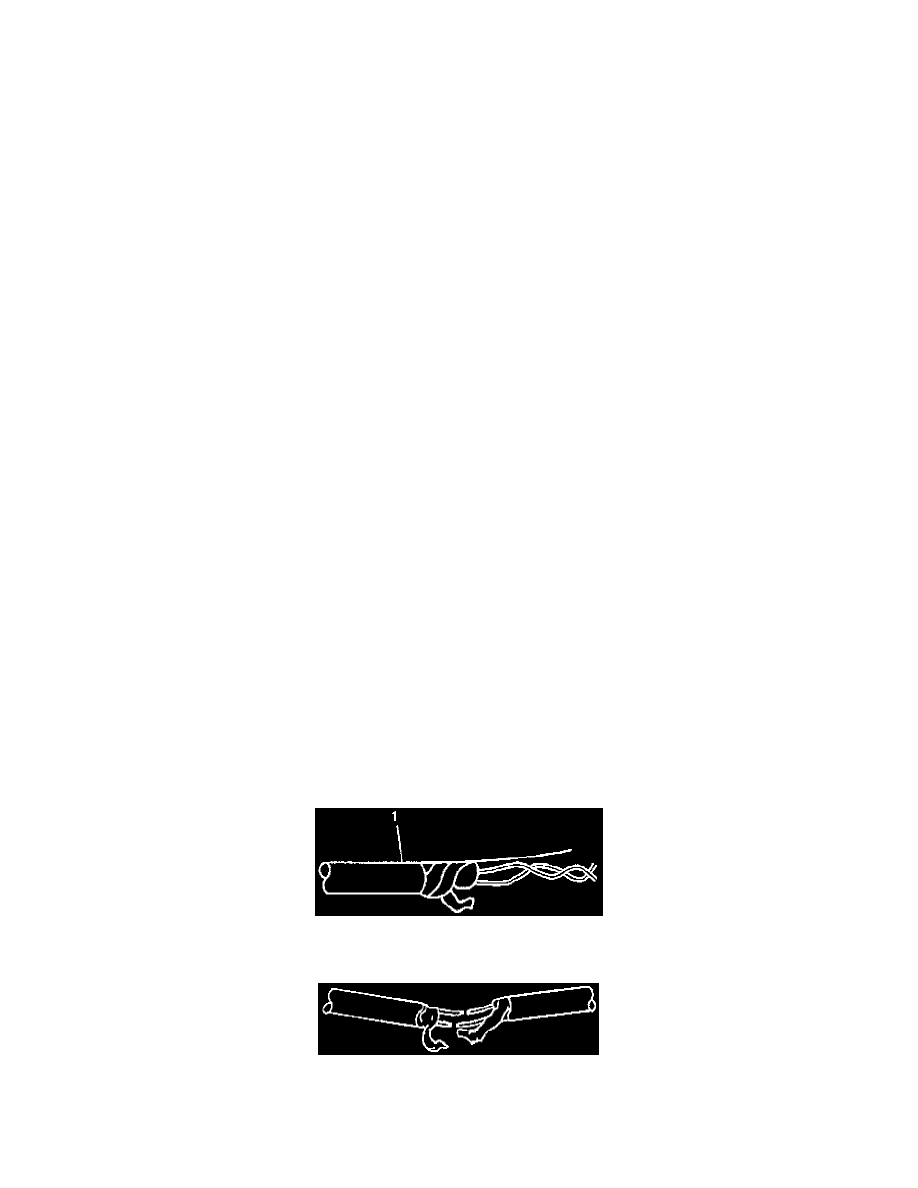Avalanche 4WD V8-5.3L (2011)

Splicing Inline Harness Diodes
Splicing Inline Harness Diodes
Many vehicle electrical systems use a diode to isolate circuits and protect the components from voltage spikes. When installing a new diode use the
following procedure.
1. Open the harness.
*
If the harness is taped, remove the tape.
*
To avoid wiring insulation damage, use a sewing seam ripper (available from sewing supply stores) in order to cut open the harness.
*
If the harness has a black plastic conduit, pull out the diode.
2. If the diode is taped to the harness, remove all of the tape.
3. Check and record the current flow direction and orientation of diode.
4. Remove the inoperative diode from the harness with a suitable soldering tool.
Note: If the diode is located next to a connector terminal remove the terminal(s) from the connector to prevent damage from the soldering tool.
5. Carefully strip away a section of insulation next to the old soldered portion of the wire(s). Do not remove any more than is needed to attach the
new diode.
6. Check current flow direction of the new diode, being sure to install the diode with correct bias. Reference the appropriate service manual wiring
schematic to obtain the correct diode installation position.
7. Attach the new diode to the wire(s) using 60/40 rosin core solder. Before soldering attach some heat sinks (aluminum alligator clips) across the
diode wire ends to protect the diode from excessive heat. Follow the manufacturer's instruction for the soldering equipment.
8. Reinstall terminal(s) into the connector body if previously removed.
Note: To prevent shorts to ground and water intrusion, completely cover all exposed wire and diode attachment points with tape.
9. Tape the diode to the harness or connector using electrical tape.
Splicing Twisted or Shielded Cable
Splicing Twisted or Shielded Cable
Danger: In order to reduce the risk of personal injury, loss of high voltage isolation to ground and higher system impedance, do not attempt to
repair any HV wiring, connector, or terminal that is damaged. High voltage coaxial type cables are not repairable. Never attempt to repair a
coaxial type cable. The entire cable/harness or component must be replaced. In order to maintain system integrity and personal safety, never
attempt to repair any high voltage wiring, cables, or terminals. Performing this procedure on high voltage circuits may result in serious injury
or death.
Twisted/shielded cable is used in order to protect wiring from electrical noise. Two-conductor cable of this construction is used between the radio and
the Delco-Bose(R) speaker/amplifier units and other applications where low level, sensitive signals must be carried. Follow the instructions below in
order to repair the twisted/shielded cable.
1. Remove the outer jacket (1). Use care not to cut into the drain wire of the mylar tape.
2. Unwrap the tape. Do not remove the tape. Use the tape in order to rewrap the twisted conductors after the splice is made.
3. Prepare the splice. Untwist the conductors and follow the instructions for Splicing Copper Wire Using Splice Sleeves See: Testing and
Inspection/Component Tests and General Diagnostics/Wiring Repairs/Splicing Copper Wire Using Splice Sleeves. Staggering the splices by 65
mm (2.5 in) is recommended.
